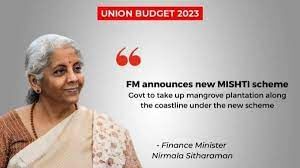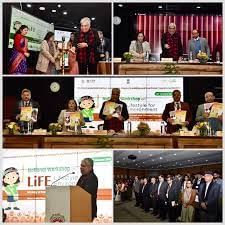UPSC Daily Current Affairs- 2nd February 2023 | Current Affairs & Hindu Analysis: Daily, Weekly & Monthly PDF Download
GS-II
MISHTI scheme
Context
In the Union Budget 2023-24 presented on Wednesday (February 1), Finance Minister Nirmala Sitharaman announced a new MISHTI scheme.
MISHTI scheme
- Building on India’s success in afforestation, ‘Mangrove Initiative for Shoreline Habitats & Tangible Incomes’, MISHTI, will be taken up for mangrove plantation along the coastline and on salt pan lands, wherever feasible, through convergence between MGNREGS, CAMPA Fund and other sources.
Why mangroves?
- Mangrove forests — consisting of trees and shrub that live in intertidal water in coastal areas — host diverse marine life.
- They also support a rich food web, with molluscs and algae-filled substrate acting as a breeding ground for small fish, mud crabs and shrimps, thus providing a livelihood to local artisanal fishers.
- They act as effective carbon stores, holding up to four times the amount of carbon as other forested ecosystems
- Mangrove forests capture vast amounts of carbon dioxide from the atmosphere and their preservation can both aid in removal of carbon from the atmosphere and prevent the release of the same upon their destruction.
Mangrove Alliance for Climate (MAC)
- Launched at the 27th session of Conference of Parties (COP27) UN climate summit, with India as a partner.
- An initiative led by the United Arab Emirates (UAE) and Indonesia, the Mangrove Alliance for Climate (MAC) includes India, Sri Lanka, Australia, Japan, and Spain.
- It seeks to educate and spread awareness worldwide on the role of mangroves in curbing global warming and its potential as a solution for climate change.
The current state of the mangroves
- South Asia houses some of the most extensive areas of mangroves globally, while Indonesia hosts one-fifth of the overall amount.
- India holds around 3 per cent of South Asia’s mangrove population.
- Besides the Sundarbans in West Bengal, the Andamans region, the Kachchh and Jamnagar areas in Gujarat too have substantial mangrove cover.
Source: Indian express
Ekalavya Model Residential Schools (EMRS)
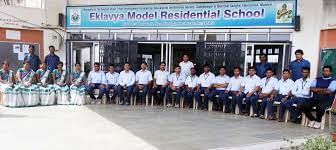
Context
Finance Minister recently said that as many as 38,800 teachers will be hired for Ekalavya Model Residential Schools.
About Ekalavya Model Residential Schools (EMRS)
- EMRS started in the year 1997-98 to impart quality education to ST children in remote areas to enable them to access the best opportunities in education and to bring them at par with the general population.
- EMRS are established in the States/UTs from the grants received under Article 275(1) of the Constitution of India.
- Features:
- EMRS are co-educational residential schools from Class VI to XII.
- Eklavya schools will be on par with Navodaya Vidyalayas and will have special facilities for preserving local art and culture besides providing training in sports and skill development.
- Each school has a capacity of 480 students with equal number of seats for boys and girls.
- Non-ST students can be admitted in these schools on seats up to 10% of the total seats.
- CBSE curriculum is followed in these schools, and education is completely free.
- The National Education Society for Tribal Students (NESTS), an autonomous organization has been set up under the Ministry of Tribal Affairs to establish and manage EMRS across the country.
- Government Target: As per the Budget 2018-19, every block with more than 50% ST population and at least 20,000 tribal population will have an EMRS by the year 2022.
Source: The Hindu
Universal Periodic Review
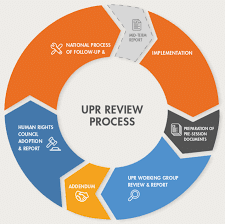
Context
Sri Lanka has concluded its Review under the 4th Cycle of the Universal Periodic Review (UPR) in Geneva
Universal Periodic Review
- The Universal Periodic Review was established by the General Assembly of the United Nations (UNGA) in 2006
- It is a State-driven voluntary peer-review process which provides the opportunity for each State to declare the steps taken at the national level to improve the human rights situation at that State and to fulfil their human rights obligations.
- The goal of UPR is the improvement of the human rights situation in every country
- The UPR also aims to provide technical assistance to States and enhance their capacity to deal effectively with human rights challenges and to share best practices in the field of human rights among States and other stakeholders.
- The reviews are conducted by the UPR Working Group which consists of the 47 members of the Council
- Any UN Member State can take part in the discussion/dialogue with the reviewed States.
- Each State review is assisted by groups of three States, known as “troikas”, who serve as rapporteurs.
- The selection of the troikas for each State is done through a drawing of lots following elections for the Council membership in the General Assembly.
Source: Newsonair
GS-III
Agriculture Infrastructure Fund (AIF)
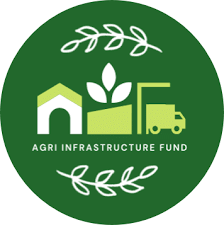
Context
On the occasion of India’s presidency of the G-20, through the theme ‘One Earth, One Family, One Future’, a one-day workshop on Agriculture Infrastructure Fund (AIF) and Madhya Pradesh Farm Gate App is being organized with the aim of encouraging the sense of global unity and increasing the participation of women in the field of agriculture.
- Representatives of NABARD and APEDA will provide information about various schemes
Agriculture Infrastructure Fund (AIF)
- Agriculture Infra Fund (AIF) is a financing facility launched in 2020 for creation of post-harvest management infrastructure and community farm assets.
- Under this scheme, Rs 1 lakh crore is to be disbursed by financial year 2025-26 and the interest subvention and credit guarantee assistance will be given till the year 2032-33.
- It gives 3% interest subvention, credit guarantee support through CGTMSE for loan of up to Rs.2 crore and facility of convergence with other Central and State Govt. Scheme
- AIF is providing all around financial support to the farmers, Agri-entrepreneurs, farmer groups like Farmer Producer Organisations (FPOs), Self Help Groups (SHGs), Joint Liability Groups (JLGs) etc. and many others to create post-harvest management infrastructure and build community farming asset throughout the country.
NABARD
- NABARD came into existence in 1982 by transferring the agricultural credit functions of RBI and refinance functions of the then Agricultural Refinance and Development Corporation (ARDC).
- Consequent to the revision in the composition of share capital between Government of India and RBI, NABARD today is fully owned by Government of India.
- It is an apex regulatory body for overall regulation of regional rural banks and apex cooperative banks in India.
- It is under the jurisdiction of Ministry of Finance, Government of India.
- The bank has been entrusted with “matters concerning policy, planning, and operations in the field of credit for agriculture and other economic activities in rural areas in India”.
- NABARD is active in developing and implementing financial inclusion.
The Agricultural and Processed Food Products Export Development Authority (APEDA)
- It is a statutory body, established by the Government of India under the Agricultural and Processed Food Products Export Development Authority Act passed by the Parliament in 1985.
- The Authority replaced the Processed Food Export Promotion Council (PFEPC).
Functions
- Development of industries relating to the scheduled products for export by way of providing financial assistance or otherwise for undertaking surveys and feasibility studies, participation in enquiry capital through joint ventures and other reliefs and subsidy schemes;
- Registration of persons as exporters of the scheduled products on payment of such fees as may be prescribed;
- Fixing of standards and specifications for the scheduled products for the purpose of exports;
- Carrying out inspection of meat and meat products in slaughter houses, processing plants, storage premises, conveyances, or other places where such products are kept or handled for the purpose of ensuring the quality of such products;
- Improving of packaging of the Scheduled products;
- Improving of marketing of the Scheduled products outside India;
- Training in various aspects of the industries connected with the scheduled products;
Source: PIB
What are Municipal Bonds ?

Context
Finance Minister recently stated that municipal bodies will be allowed to issue bonds for improving their infrastructure, and cities will be incentivised to improve their creditworthiness over the bonds
About Municipal Bonds:
- What is it? A municipal bond or muni bond is a debt instrument issued by municipal corporations or associated bodies in India.
- Purpose: The funds raised are used to finance socio-economic development projects.
- History: It was first issued in the 1997 by Bangalore local body for infrastructure development projects 4 years after decentralization of powers and authorities to the Municipal bodies by the 74th constitutional amendment.
- Tax Exemption: Municipal bonds are exempted from tax provided the buyer adheres to the rules laid by the municipal corporations. The interest is also exempted from taxes.
- Securities and Exchange Board of India (SEBI) Guidelines :
- The municipal body should not have a history of defaulting at repayments of loans or debt instruments acquired from financial institutions in the past year.
- It should possess a positive net worth in all the three years preceding the issuance of municipal bonds.
- Such municipal entity, its Group Company or directors, and promoters shall not be mentioned in the willful defaulters’ list published by the Reserve Bank of India.
What is a bond?
- It is a debt security.
- Borrowers issue bonds to raise money from investors willing to lend them money for a certain amount of time.
- When you buy a bond, you are lending to the issuer, which may be a government, municipality, or corporation.
- In return, the issuer promises to pay you a specified rate of interest during the life of the bond and to repay the principal.
Source: The Hindu
Environmental Information, Awareness, Capacity Building and Livelihood Programme (EIACP)
Context
Recently, the Environmental Information, Awareness, Capacity Building and Livelihood Programme (EIACP) organised a ‘National workshop on LiFE’ in association with National Museum of Natural History, a subordinate office of Ministry of Environment, Forest and Climate Change.
About Environmental Information, Awareness, Capacity Building and Livelihood Programme (EIACP):
- Environmental Information System (ENVIS) was renamed as EIACP (Environmental Information, Awareness, Capacity Building and Livelihood Programme).
- ENVIS came into existence as a plan programme in 1983.
- It serves as a single-stop web-enabled repository of comprehensive environmental information with collection, collation, storage, retrieval and dissemination of the same through a nationwide network of ENVIS Hubs and ENVIS Resource Partners (RPs).
About National Museum of Natural History:
- The National Museum of Natural History (NMNH), New Delhi was established in 1972.
- The museum functions under the Ministry of Environment, Forests and Climate Change, Government of India.
- It is an institution devoted to environmental education, derives its strength principally from theme-based exhibition galleries, experiential resource centers and Out-Reach Activities, with the intention to depict the country’s rich natural heritage and natural history (Geology, Botany and Zoology).
- Objectives of NMNH:
- To develop the NMNH in the country’s capital to achieve the highest level of quality to promote environmental education on a national level
- To develop Regional Offices (Regional Museum of Natural History) in various regions of the country in order to extend its activities at the regional/local levels
- To develop museum-based educational projects at the level so as to help school curriculum on environmental education
- To develop environmental education resource materials (such as audio-visual aids, low-cost teaching aids, school loan kits, etc.) to promote environmental education
- To undertake research (musicological and collection based) consonant with the scope and resources of the museum
- To extend professional help to other agencies/organizations regarding natural history collections/museums
- To develop national and international cooperation/collaboration with other organizations/professional bodies/museums related to natural history/environmental education.
Source: PIB
What is Sickle cell anemia?
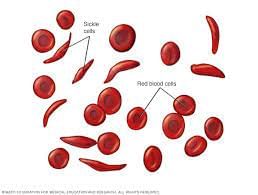
Context
Union Finance Minister recently announced the Central Government’s plan to launch a mission to eliminate sickle cell anemia by 2047.
About Sickle cell anemia:
- It is an inherited blood disorder.
- It affects hemoglobin, the molecule in red blood cells that delivers oxygen to cells throughout the body.
- People with this disease have atypical hemoglobin molecules called hemoglobin S, which can distort red blood cells into a sickle, or crescent, shape.
- These sickle cells also become rigid and sticky, which can slow or block blood flow.
- What causes it?
- The cause of Sickle cell disease is a defective gene, called a sickle cell gene.
- A person will be born with sickle cell disease only if two genes are inherited—one from the mother and one from the father.
- Symptoms:
- Early stage: Extreme tiredness or fussiness from anemia, painfully swollen hands and feet, and jaundice.
- Later stage: Severe pain, anemia, organ damage, and infections.
- Treatments:
- The only cure for this disease is bone marrow or stem cell transplantation.
- However, there are treatments that can help relieve symptoms, lessen complications, and prolong life.
Source: PIB
|
38 videos|5293 docs|1118 tests
|
FAQs on UPSC Daily Current Affairs- 2nd February 2023 - Current Affairs & Hindu Analysis: Daily, Weekly & Monthly
| 1. What is the significance of GS-II and GS-III in UPSC exams? |  |
| 2. What are the key areas covered in GS-III? |  |
| 3. How can I prepare for GS-III in UPSC exams? |  |
| 4. What are the recent developments in the field of science and technology that are relevant for GS-III? |  |
| 5. How does GS-III contribute to the overall assessment in UPSC exams? |  |

